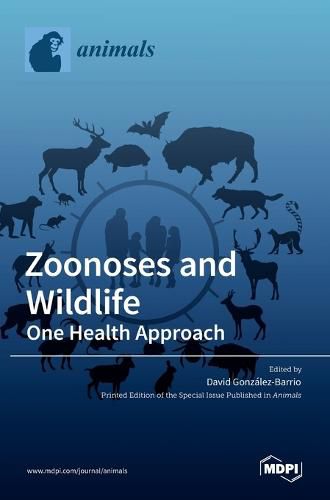Readings Newsletter
Become a Readings Member to make your shopping experience even easier.
Sign in or sign up for free!
You’re not far away from qualifying for FREE standard shipping within Australia
You’ve qualified for FREE standard shipping within Australia
The cart is loading…






This title is printed to order. This book may have been self-published. If so, we cannot guarantee the quality of the content. In the main most books will have gone through the editing process however some may not. We therefore suggest that you be aware of this before ordering this book. If in doubt check either the author or publisher’s details as we are unable to accept any returns unless they are faulty. Please contact us if you have any questions.
Throughout history, wildlife has been an important source of infectious diseases transmissible to humans. Today, zoonoses with a wildlife reservoir constitute a major public health problem, affecting all continents. The importance of such zoonoses is increasingly recognized, and the need for more attention in this area is being addressed. The total number of zoonoses is unknown, some 1,415 known human pathogens have been catalogued, and 62% are of zoonotic origin [1]. With time, more and more human pathogens are found to be of animal origin. Moreover, most emerging infectious diseases in humans are zoonoses. Wild animals seem to be involved in the epidemiology of most zoonoses and serve as major reservoirs for transmission of zoonotic agents to domestic animals and humans [2]. The concept of the ‘One Health’ approach involving collaboration between veterinary and medical scientists, policy makers, and public health officials, is necessary to foster joint cooperation and control of emerging zoonotic diseases [3]. Zoonotic diseases caused by a wide range of arthropods, bacteria, helminths, protozoans, and viruses can cause serious and even life-threatening clinical conditions in animals, with a number of them also affecting the human population due to their zoonotic potential.
The aim of the current Special Issue is to cover recent and novel research trends in zoonotic diseases in wildlife, including the relevant topics related to wildlife, zoonosis, public health, emerging diseases, infectious diseases and parasitic diseases.
$9.00 standard shipping within Australia
FREE standard shipping within Australia for orders over $100.00
Express & International shipping calculated at checkout
This title is printed to order. This book may have been self-published. If so, we cannot guarantee the quality of the content. In the main most books will have gone through the editing process however some may not. We therefore suggest that you be aware of this before ordering this book. If in doubt check either the author or publisher’s details as we are unable to accept any returns unless they are faulty. Please contact us if you have any questions.
Throughout history, wildlife has been an important source of infectious diseases transmissible to humans. Today, zoonoses with a wildlife reservoir constitute a major public health problem, affecting all continents. The importance of such zoonoses is increasingly recognized, and the need for more attention in this area is being addressed. The total number of zoonoses is unknown, some 1,415 known human pathogens have been catalogued, and 62% are of zoonotic origin [1]. With time, more and more human pathogens are found to be of animal origin. Moreover, most emerging infectious diseases in humans are zoonoses. Wild animals seem to be involved in the epidemiology of most zoonoses and serve as major reservoirs for transmission of zoonotic agents to domestic animals and humans [2]. The concept of the ‘One Health’ approach involving collaboration between veterinary and medical scientists, policy makers, and public health officials, is necessary to foster joint cooperation and control of emerging zoonotic diseases [3]. Zoonotic diseases caused by a wide range of arthropods, bacteria, helminths, protozoans, and viruses can cause serious and even life-threatening clinical conditions in animals, with a number of them also affecting the human population due to their zoonotic potential.
The aim of the current Special Issue is to cover recent and novel research trends in zoonotic diseases in wildlife, including the relevant topics related to wildlife, zoonosis, public health, emerging diseases, infectious diseases and parasitic diseases.